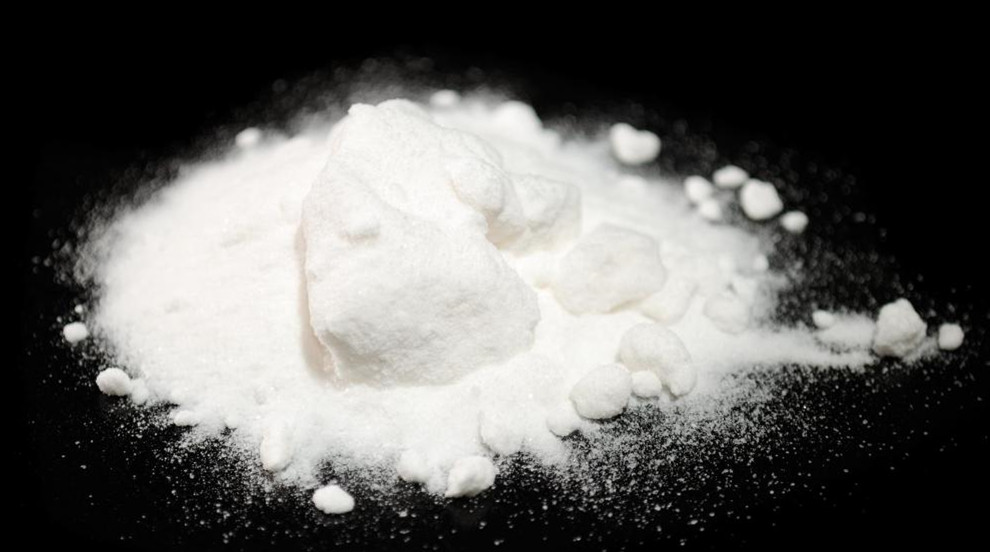Cocaine is an addictive drug that is made from coca bush leaves. Coca bush is a plant that is mostly grown in South America. Cocaine is rarely sold as a pure drug. Sellers often mix it with other drugs and substances such as amphetamines and talcum powder. Cocaine has different street names that include Coke or C, flake, snow, and blow.
What Does Cocaine Look Like?

Cocaine is an illegal drug in many states and mostly sold as a white powder that users sniff through their nostrils. The drug is soluble in water and can be injected directly into blood system. Also, through some chemical process, the cocaine can be made into "freebase" and "crack" forms, which look like crystals and are smoked.
The drug is sold either as crystalline powder that is snorted or as crack, which is smoked. Crack is made of cocaine hydrochloride that is chemically processed with water and ammonia or sodium bicarbonate. The chemical process produces the drug in chips, rocks or chunks.
How Does Cocaine Make You Feel?
Cocaine produces varying effects depending on the form, frequency and amount. Alcohol or other drugs influences its effects. The user feels energetic, awake, happy, and attentive. It can also make you paranoid, restless, anxious, irritable or agitated. These feelings reduce with time and hence users have to take more of the drug to experience the same feelings. Cocaine users are prone to anxiety, psychosis and seizures. Cocaine takes effect within minutes when sniffed and lasts for an hour at most. Effects can be felt within seconds when smoked and last for 5-10 minutes.
How Does Cocaine Harm Your Body?
After knowing the most frequently asked questions, what does cocaine look like, and how it makes you feel, it is important to point out its effects on your body before using it.
Make You Addictive to Cocaine
Cocaine is an addictive drug that interferes with some functions of your brain including the production of chemicals that generate pleasure. Consequently, you will always need to take more of the drug for your brain to function normally. Cocaine users cannot control their need and use of the drug in the long term. Many users are aware of the negative effects of cocaine on their health, social interactions and brain functions. However, they continue to crave for the drug and may "crash" without the drug. Withdrawing from cocaine leads to mood swings, irritation, sleeplessness, oversleeping and exhaustion among others.
Restrict the Flow of Blood to Your Heart
A study conducted at the Hospital of the Good Samaritan revealed that the drug has an effect on the heart rate and blood pressure. Cocaine increases both the heart rate and blood pressure, which interferes with the flow of oxygenated blood to the heart. Lack of oxygenated blood in the heart leads to other complications including tissue diseases, heart attacks, pain in the chest and sometimes stroke.
Increase the Risk of Heart Attacks
Beth Israel Deaconess Medical Center's researchers conducted a study in 1999 in Boston on the effects cocaine. They found out that the drug increases the risk of heart attack about 24 times within an hour. The researchers conducted another study in 2008 and discovered that 10 percent of patients who experienced heart attacks between 18 and 45 years old had used cocaine more than 10 times in their lifetime.
Cocaine Ages Parts of Your Brain
A study conducted at the University of Cambridge showed that the drug ages your brain fast. It reduces the grey matter in your brain and ages other parts of the brain prematurely. This grey matter controls your memory and helps you make decisions and pay attention.The rate at which grey matter in a cocaine user's brain reduces almost doubles that of a non-user.
Lead to Depression
Cocaine users are under a higher risk of depression than non-users. A study conducted in 2009 by two credible institutions, Ann Arbor VA Medical Center and the University of Michigan, revealed that cocaine depletes VMAT2 levels. VMAT2 is a protein that produces dopamine in the brain that can triggerpleasure, and its depletion increases the user's risk of depression.
Reduce Your Sex Drive
You may experience an enhanced sex drive and stamina when you start using cocaine. However, the drive and stamina will reduce after using cocaine for a long time. Similar to other addictive drugs, cocaine may lead to impotence in the long term. The prolonged stamina and high sex drive are short lived and unsustainable for cocaine abusers.
Result in Respiratory Diseases
Cocaine destroys the user's nasal tissue every time a user snorts or smokes. The drug passes through the nose before it is absorbed in the bloodstream. A cocaine user may not feel the irritation and pain that the drug causes on the nasal tissue because it numbs the pain. However, the drug may damage the septum and cause a running nose.
Other Risks Associated with Cocaine
Cocaine users are at risk of contracting infectious diseases such as hepatitis and HIV if they share needles. Users are also at risk of overdosing on the drug, committing a crime, turning to violence, and losing interest in important life activities. Cocaine users may withdraw from friends, family, school or their favorite sport. They are at risk of overdosing on other drugs combined with cocaine and consuming other substances that may look like cocaine. Pregnant women are advised against using cocaine. The drug may lead to a miscarriage or an underdeveloped baby. The baby might be addicted to cocaine as well.
With figuring out the question what does cocaine look like, how it make you feel, and how it harm your body, you should keep away from the addictive drug and live a healthy life.
